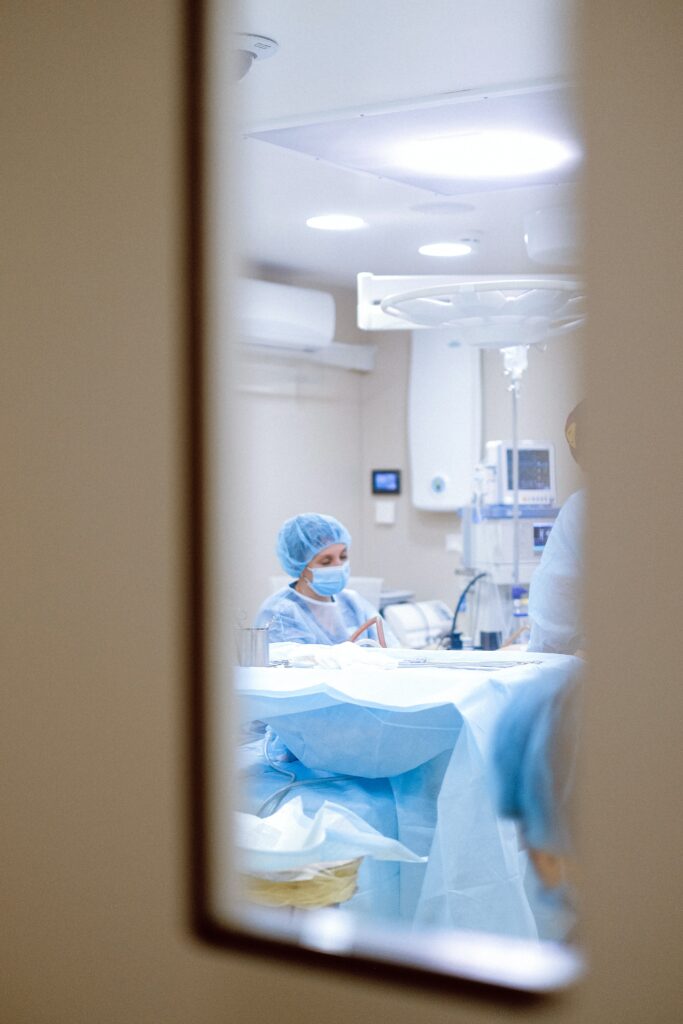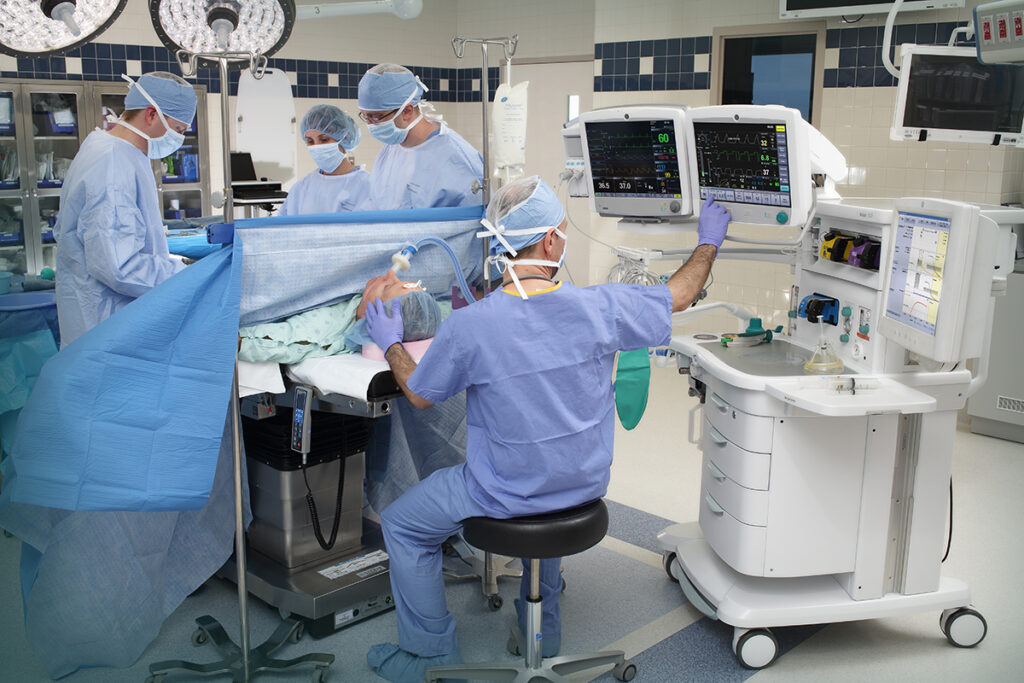What is Anesthesia

Anesthesia is a medical procedure used to prevent pain and discomfort during surgical or other medical procedures. It is typically administered by an anesthesiologist or a certified nurse anesthetist, who use a combination of medications to induce a temporary state of unconsciousness or sedation in the patient.
The goal of anesthesia is to allow medical procedures to be performed safely and with minimal pain or discomfort to the patient. There are three main types of anesthesia: general anesthesia, regional anesthesia, and local anesthesia. The choice of anesthesia depends on the type and duration of the medical procedure being performed, as well as the patient’s medical history and overall health.
General anesthesia is the most common type of anesthesia and is typically used for more complex medical procedures. It involves the administration of a combination of medications, including anesthetic gases and intravenous medications, that induce a temporary state of unconsciousness. This means that the patient will not feel any pain or discomfort during the procedure.
Regional anesthesia involves the injection of a local anesthetic medication near a specific nerve or group of nerves. This type of anesthesia is used for procedures that are limited to a specific area of the body, such as a limb or a specific organ. Regional anesthesia can also be used in combination with general anesthesia to provide pain relief after the procedure.
Local anesthesia involves the injection of a local anesthetic medication directly into the area where the procedure will be performed. This type of anesthesia is typically used for minor procedures, such as dental work or skin biopsies.
Regardless of the type of anesthesia used, the anesthesiologist or certified nurse anesthetist carefully monitors the patient’s vital signs throughout the procedure, including blood pressure, heart rate, and oxygen levels. This allows them to adjust the level of anesthesia as needed to ensure the patient’s safety and comfort.
The medications used for anesthesia work by affecting the central nervous system, which includes the brain and spinal cord. These medications either block the transmission of pain signals from the nerves to the brain or depress the activity of the brain itself, resulting in a temporary loss of consciousness or sedation.
In addition to the medications used for anesthesia, other medications may be given to prevent nausea and vomiting, and to manage pain after the procedure. These medications are carefully selected and administered by the anesthesiologist or certified nurse anesthetist to ensure the patient’s safety and comfort throughout the procedure and during the recovery period.
How Does an Anesthesia Machine Work?
Anesthesia machines are complex pieces of medical equipment that are essential for administering anesthesia during surgery. These machines are operated by trained professionals called anesthesiologists or certified registered nurse anesthetists.
The basic function of an anesthesia machine is to deliver a precisely controlled mixture of anesthetic gases and oxygen to the patient. This mixture is delivered through a breathing circuit, which is connected to the patient’s airway. The anesthesia machine has several key components that work together to deliver the anesthetic gases to the patient.

- Anesthesia Vaporizer – This component of the anesthesia machine is responsible for delivering a specific concentration of anesthetic gas to the patient. The vaporizer has a chamber that holds liquid anesthetic, which is converted into a gas and mixed with oxygen before being delivered to the patient. The anesthesiologist adjusts the vaporizer to ensure the patient receives the appropriate amount of anesthetic gas based on their weight, age, medical condition, and other factors.
- Flowmeter – The flowmeter controls the flow of gases to the patient. It is calibrated to deliver a precise amount of oxygen and anesthetic gas to the patient based on their individual needs. The flowmeter can be adjusted by the anesthesiologist to regulate the rate of gas flow and ensure the patient receives the correct amount of gas at all times.
- Breathing Circuit – The breathing circuit connects the patient to the anesthesia machine and delivers the anesthetic gases to the patient. The circuit includes a variety of valves, hoses, and other components that work together to ensure the patient receives a continuous flow of gas. The breathing circuit also includes a carbon dioxide absorber that removes carbon dioxide from the patient’s exhaled breath, preventing it from being re-inhaled.
- Oxygen Monitor – The oxygen monitor is a critical safety feature of the anesthesia machine. It measures the concentration of oxygen in the patient’s blood to ensure they are receiving enough oxygen to maintain normal bodily functions. The monitor uses a sensor attached to the patient’s skin or a probe inserted into a blood vessel to measure the oxygen level in the blood. If the oxygen level drops below a certain threshold, an alarm will sound, alerting the anesthesiologist to take corrective action.
- Safety Features – The anesthesia machine includes several safety features to ensure the patient’s safety during the procedure. These features include a pressure relief valve that prevents the build-up of pressure in the breathing circuit, an oxygen supply failure alarm that sounds if the oxygen supply to the machine is interrupted, and an automatic shut-off valve in case of an emergency. The machine also has a backup power source in case of a power outage.
Anesthesia machines play a crucial role in providing care during surgery. These machines deliver a precise mixture of anesthetic gases and oxygen to the patient, ensuring they remain unconscious and pain-free during the procedure. The machine is operated by a highly trained medical professional called an anesthesiologist or a certified registered nurse anesthetist (CRNA).
Throughout the surgery, the anesthesiologist or CRNA monitors the patient’s vital signs, including their heart rate, blood pressure, and oxygen levels. They make adjustments to the anesthesia machine as needed to ensure the patient remains unconscious and pain-free during the procedure.
